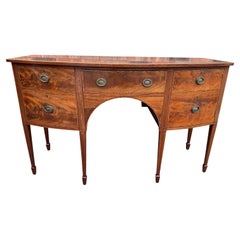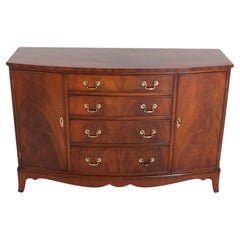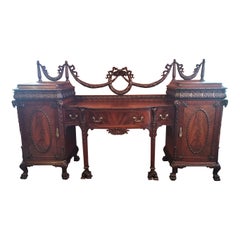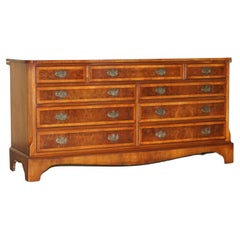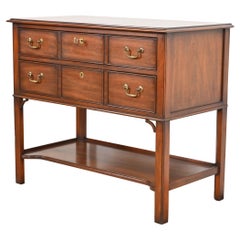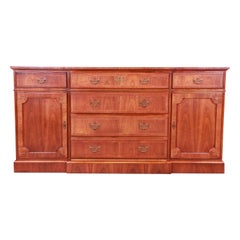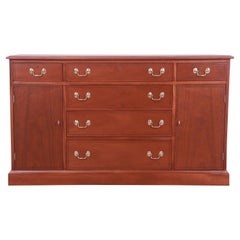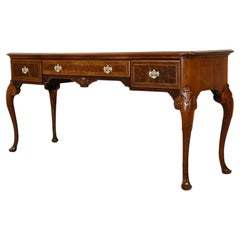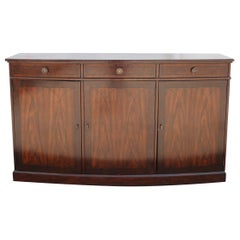Georgian Style Sideboard
Antique Early 1900s English Sideboards
Wood
Vintage 1920s Georgian Sideboards
Mahogany
Early 20th Century English Chippendale Buffets
Mahogany
20th Century English Georgian Commodes and Chests of Drawers
Walnut
Vintage 1980s American Georgian Sideboards
Brass
Late 20th Century American Georgian Sideboards
Brass
Vintage 1970s American Georgian Sideboards
Brass
20th Century American Georgian Sideboards
Walnut
21st Century and Contemporary North American Modern Sideboards
Walnut
Early 20th Century Chippendale Buffets
Mahogany
20th Century English Georgian Sideboards
Hardwood
Vintage 1930s British Georgian Sideboards
Wood
Mid-20th Century Georgian Serving Tables
Burl
Antique Late 18th Century British Georgian Dressers
Metal
Antique Late 19th Century English Georgian Sideboards
Hardwood
Mid-20th Century American Hepplewhite Sideboards
Mahogany
20th Century American Sideboards
Brass
Vintage 1980s American Georgian Sideboards
Brass
Vintage 1940s American Georgian Sideboards
Brass
Late 20th Century American Georgian Sideboards
Brass
20th Century British Sideboards
Yew
Vintage 1970s American Georgian Sideboards
Brass
20th Century English Georgian Sideboards
Hardwood
Late 20th Century Unknown Georgian Cabinets
Wood
1990s American Georgian Credenzas
Walnut
20th Century English Georgian Sideboards
Hardwood
21st Century and Contemporary Philippine Georgian Sideboards
Brass
Vintage 1920s American Georgian Credenzas
Brass
20th Century British Georgian Sideboards
Hardwood
Mid-20th Century American Georgian Sideboards
Mahogany
Antique 19th Century English Sideboards
Mahogany
Antique 1890s English Sideboards
20th Century American Georgian Sideboards
Brass
Antique Early 1900s English Sideboards
Mahogany
Vintage 1930s English Serving Tables
Wood
Antique Late 19th Century English Georgian Credenzas
Wood
Antique 19th Century English Sideboards
Mahogany
Mid-20th Century Chinoiserie Console Tables
Metal
Mid-20th Century English Georgian Sideboards
Wood
Vintage 1950s British Georgian Sideboards
Wood
Late 20th Century American Georgian Sideboards
Brass
Vintage 1960s American Georgian Console Tables
Brass
Late 20th Century American Georgian Sideboards
Brass
Late 20th Century American Georgian Sideboards
Brass
Late 20th Century American Georgian Sideboards
Brass
Mid-20th Century American Georgian Sideboards
Brass
Mid-20th Century American Georgian Sideboards
Mahogany
Antique 1880s English Georgian Sideboards
Mahogany
Late 20th Century American Georgian Sideboards
Brass
Vintage 1950s American Georgian Cabinets
Brass
Mid-20th Century American Federal Sideboards
Brass
Mid-20th Century English Georgian Sideboards
Wood
Vintage 1950s British Georgian Sideboards
Wood
Mid-20th Century English Georgian Sideboards
Yew
Vintage 1930s British Georgian Commodes and Chests of Drawers
Wood
Vintage 1950s British Georgian Commodes and Chests of Drawers
Wood
20th Century British Georgian Sideboards
Hardwood
20th Century Italian Georgian Sideboards
Mahogany
- 1
Georgian Style Sideboard For Sale on 1stDibs
How Much is a Georgian Style Sideboard?
Finding the Right Storage-case-pieces for You
Of all the vintage storage cabinets and antique case pieces that have become popular in modern interiors over the years, dressers, credenzas and cabinets have long been home staples, perfect for routine storage or protection of personal items.
In the mid-19th century, cabinetmakers would mimic styles originating in the Louis XIV, Louis XV and Louis XVI eras for their dressers, bookshelves and other structures, and, later, simpler, streamlined wood designs allowed these “case pieces” or “case goods” — any furnishing that is unupholstered and has some semblance of a storage component — to blend into the background of any interior.
Mid-century modern furniture enthusiasts will cite the tall modular wall units crafted in teak and other sought-after woods of the era by the likes of George Nelson, Poul Cadovius and Finn Juhl. For these highly customizable furnishings, designers of the day delivered an alternative to big, heavy bookcases by considering the use of space — and, in particular, walls — in new and innovative ways. Mid-century modern credenzas, which, long and low, evolved from tables that were built as early as the 14th century in Italy, typically have no legs or very short legs and have grown in popularity as an alluring storage option over time.
Although the name immediately invokes images of clothing, dressers were initially created in Europe for a much different purpose. This furnishing was initially a flat-surfaced, low-profile side table equipped with a few drawers — a common fixture used to dress and prepare meats in English kitchens throughout the Tudor period. The drawers served as perfect utensil storage. It wasn’t until the design made its way to North America that it became enlarged and equipped with enough space to hold clothing and cosmetics. The very history of case pieces is a testament to their versatility and well-earned place in any room.
In the spirit of positioning your case goods center stage, decluttering can now be design-minded.
A contemporary case piece with open shelving and painted wood details can prove functional as a storage unit as easily as it can a room divider. Alternatively, apothecary cabinets are charming case goods similar in size to early dressers or commodes but with uniquely sized shelving and (often numerous) drawers.
Whether you’re seeking a playful sideboard that features colored glass and metal details, an antique Italian hand-carved storage cabinet or a glass-door vitrine to store and show off your collectibles, there are options for you on 1stDibs.
- What is Georgian-style silver?1 Answer1stDibs ExpertApril 5, 2022Georgian-style silver is the term for items made out of sterling silver produced in England during the Georgian age, which lasted from 1714 to 1830. During this time period, England became known for producing fine-quality tableware, cutlery and decorative objects. On 1stDibs, find a collection of Georgian-style silver.
- 1stDibs ExpertSeptember 28, 2021With respect to furniture design, the Federal style has many of the same elements of the Georgian style — symmetry, classical details, and a side-gabled roof, yet it is different in its ornamentation and sophistication. Federal details are more delicate, slender and finely drawn than their Georgian counterparts and may feature swags, garlands, and urns. You will find many products incorporating both the Georgian and Federal styles on 1stDibs.
Read More
The Ultimate Guide to Types of Tables for the Home
Whether you’re just moving in or ready to give your home a makeover, our guide will give you pointers on tables that are fitting for every room, nook and hallway.
What Exactly Is a Secretary Desk, and What Is It Used For?
The furniture equivalent of a Swiss Army knife, it's the multifunctional piece you didn't know you needed.
This Shelving System with Oxidized Brass Tubes Is Retro and Futuristic at Once
Italian studio DimoreMilano mustered great ingenuity when crafting these sculptural shelves, which are built without any screws.
28 Cheerful Home Bars, Where Everybody (Literally) Knows Your Name
Simple or sophisticated, equipped with console, cart or custom cabinetry, these stylish bar areas deserve a toast.
Ask an Interior Designer: Work-from-Home Edition
Leaping into a design project, whether it's refreshing the bedroom or redoing the whole house, can be overwhelming. Luckily, we know more than a few interior designers. You asked questions on Instagram, and now they're answering.
Collected and Eclectic, ‘Wunderkammern’ Are Back in a Big Way
Introduced nearly 500 years ago, curiosity cabinets are finding new fans among today's collectors and designers.
Meet the Incredible Woman Transforming Fallen Trees into Sleek Furniture
In the hands of New York Heartwoods cofounder Megan Offner, unwanted local trees become works of design art.
These New York Architects Love a Complicated Project
From Brooklyn townhouses to Maine campgrounds, Trattie Davies and Jonathan Toews relish a challenge, like transforming a former warehouse space into the new 1stdibs Gallery.
